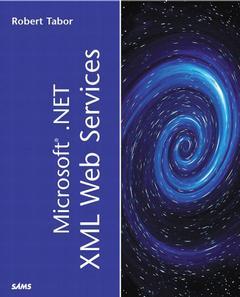Microsoft.NET webservices
Auteur : TABOR Robert

Learn to create, expose, and create Web Services through detailed examples.
- The reader will be able to create a scalable, secure, enterprise class Web Service and deploy it to a .NET server environment.
- Shows how to expose existing COM and COM+ objects as Web Services.
- Readers will be able to create management tools for business analysts and system operators to monitor and manage the Web Service.
Robert Tabor is a Microsoft Certified Professional in Visual Basic with over six years of experience developing n-tier Microsoft-centric applications for some of the worlds most prestigious companies and consulting organizations such as Ernst & Young, KPMG, Cambridge Technology Partners, Sprint, American Heart Association, and Mary Kay, Incorporated. Bob regularly writes articles for SOAPWebServices.com, a site that explores the business and technical issues surrounding SOAP, Web Services, BizTalk, and Microsoft .NET. He is currently working on initiatives within Mary Kay of how to utilize .NET within their e-business group.
1. Introducing Web Services.
2. Creating a Simple Web Service with .NET SDK.
3. Consuming a Simple Web Service with .NET SDK.
4. Creating a Simple Web Service in Visual Studio.NET.
5. Consuming a Web Service in Visual Studio.NET.
6. How ASP.NET Works.
7. Examining SOAP.
8. Understanding WSDL.
9. Understanding DISCO.
10. Exceptions and Error Handling.
11. Accessing ASP.NET Objects via Web Services.
12. Tree Methods of Calling Web Services.
13. Web Services Attributes and Properties.
14. Passing Complex Data Types and Structures.
15. Passing ADO.NET DataSets via Web Services.
16. Using the Web Services Designer in Visual Studio. NET.
17. COM Interoperability and Web Services.
18. Using Transactions in Web Services.
19. Calling Web Services Asynchronously.
20. Comsuming Web Services in Office XP.
21. Web Service Behaviors.
22.
Date de parution : 06-2001
Ouvrage de 600 p.
22.9x17.8 cm
